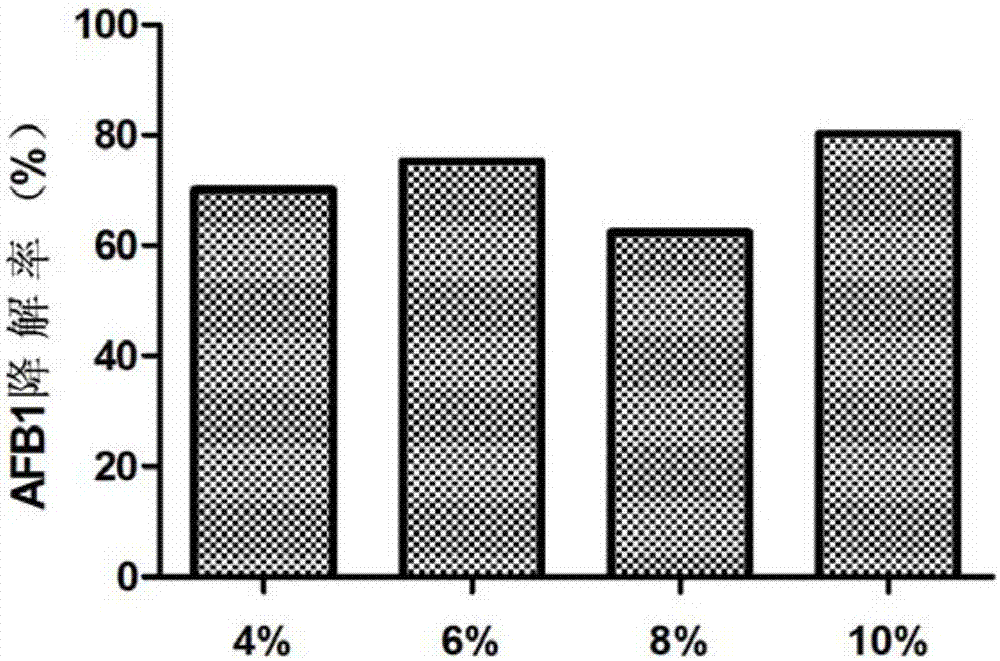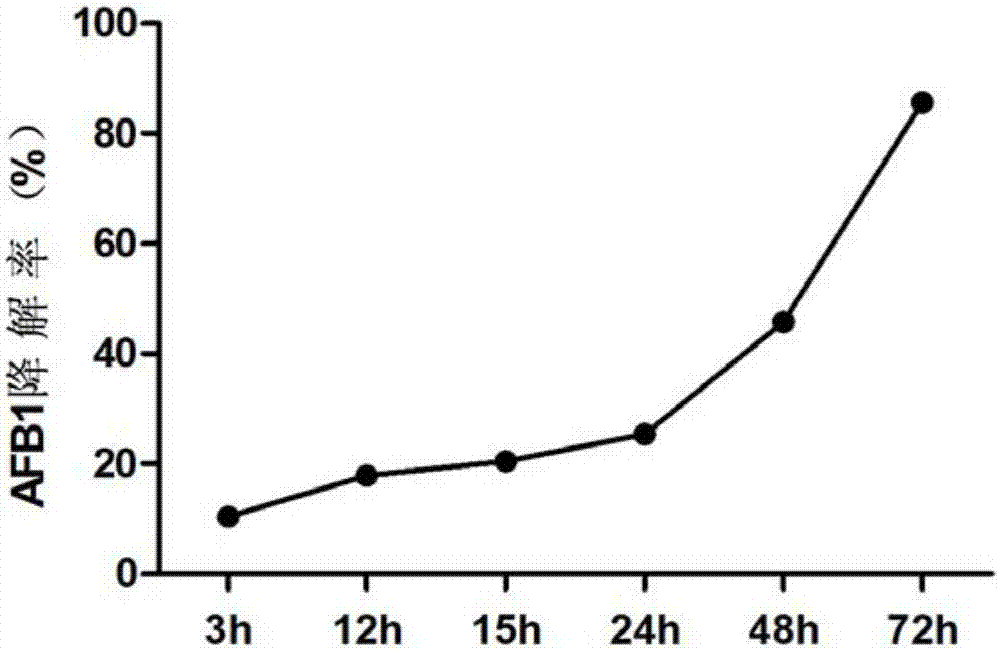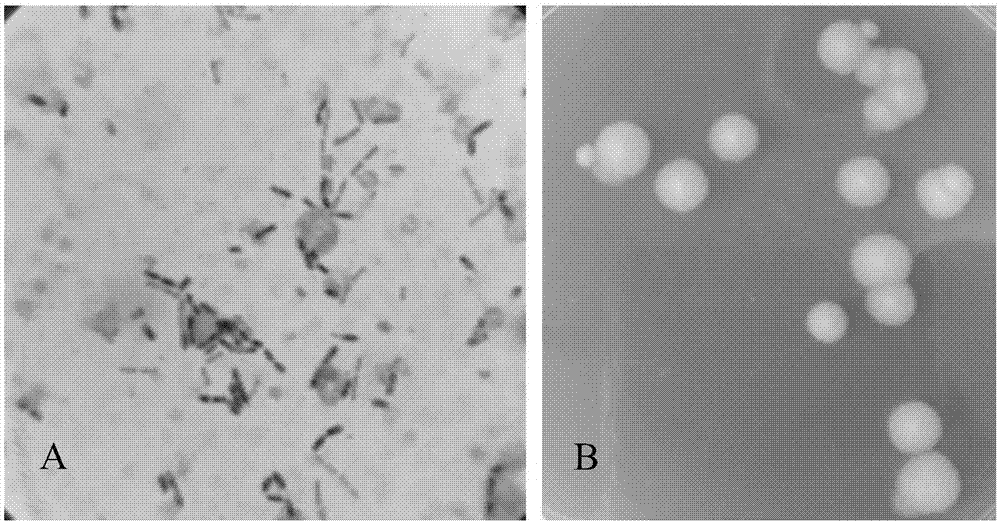Bacillus subtilis for degrading aflatoxin B1, and application of bacillus subtilis
A Bacillus subtilis, aflatoxin technology, applied in the application of Bacillus subtilis, the field of Bacillus subtilis, can solve the problem that the degradation effect of high concentration AFB1 needs to be improved, etc.
- Summary
- Abstract
- Description
- Claims
- Application Information
AI Technical Summary
Problems solved by technology
Method used
Image
Examples
Embodiment 1
[0024] Bacillus subtilis S1 for degrading aflatoxin B1, deposit number: CCTCC NO: M 2016390, deposit date: July 12, 2016, depository unit: China Center for Type Culture Collection (CCTCC), deposit Address: Wuhan, China. Wuhan University (Wuhan University Collection Center, Luojia Mountain, Wuchang, Wuhan City, Hubei Province).
Embodiment 2
[0026] The application of Bacillus subtilis S1 (CCTCC NO: M 2016390) in degrading aflatoxin B1 includes: taking Bacillus subtilis S1 for fermentation and culturing, and the obtained fermentation liquid is used to degrade aflatoxin B1. Alternatively, the fermentation broth is centrifuged (to remove bacteria), and the active protein in the supernatant is separated, and the active protein is used to degrade aflatoxin B1.
Embodiment 3
[0028] The application of Bacillus subtilis S1 (CCTCC NO: M 2016390) in the preparation of biological feed additives for degrading aflatoxin B1 includes: taking Bacillus subtilis S1 for fermentation and culture, centrifuging after cultivation to obtain supernatant; The active protein is separated and mixed with auxiliary materials to obtain a biological feed additive.
PUM
 Login to View More
Login to View More Abstract
Description
Claims
Application Information
 Login to View More
Login to View More - R&D
- Intellectual Property
- Life Sciences
- Materials
- Tech Scout
- Unparalleled Data Quality
- Higher Quality Content
- 60% Fewer Hallucinations
Browse by: Latest US Patents, China's latest patents, Technical Efficacy Thesaurus, Application Domain, Technology Topic, Popular Technical Reports.
© 2025 PatSnap. All rights reserved.Legal|Privacy policy|Modern Slavery Act Transparency Statement|Sitemap|About US| Contact US: help@patsnap.com



